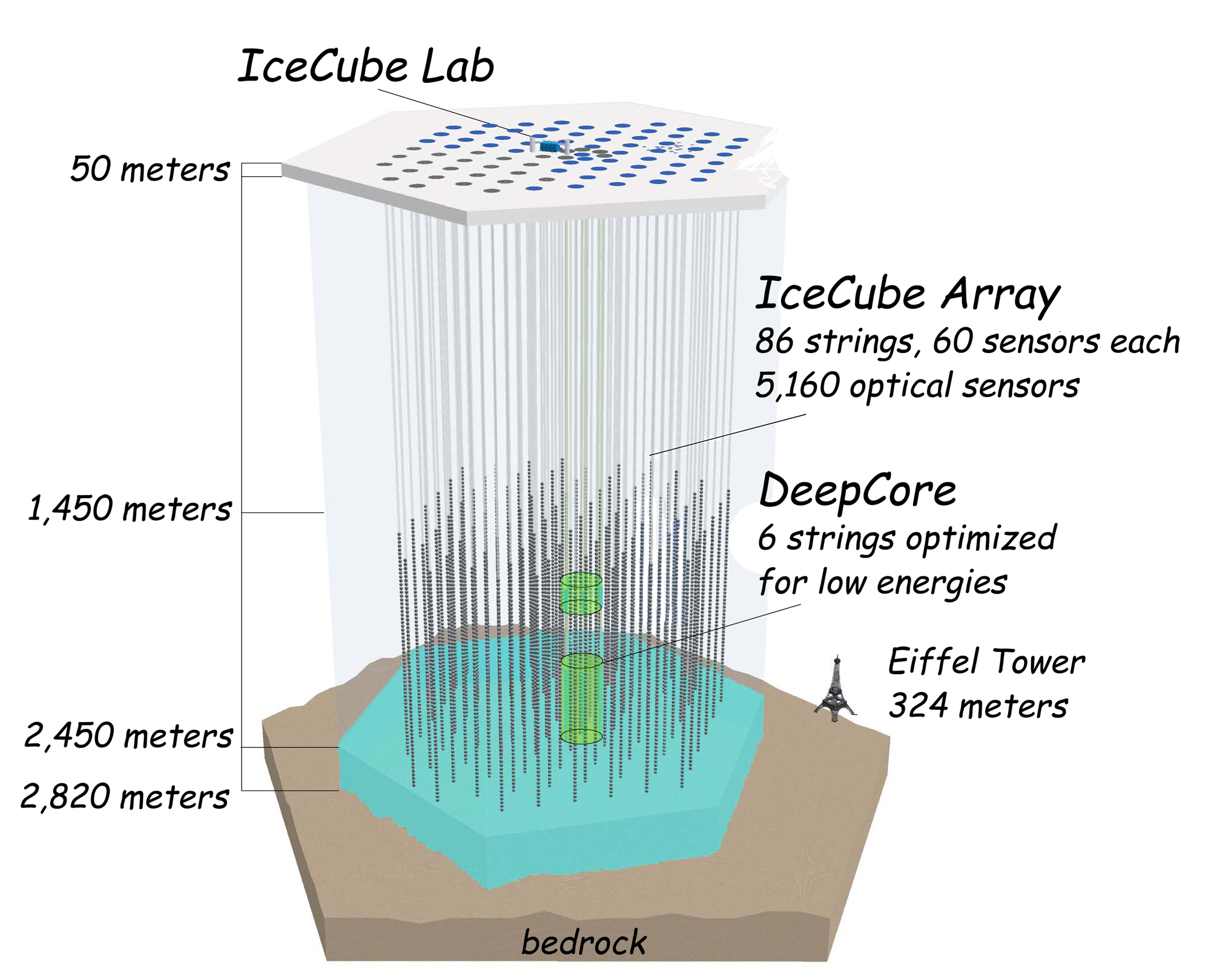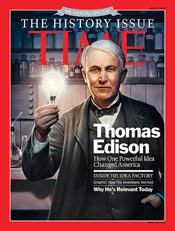Neutrino (Def): An elementary particle which holds no electrical charge, travels at nearly the speed of light, and passes through ordinary matter with virtually no interaction.
Edison would applaud the innovative efforts that went into the conception and construction of the IceCube Neutrino Observatory, essentially a giant neutrino detector to help us better understand the universe and its awesome operations.
Deep below the South Pole, carved into a cubic mile of ancient ice, is IceCube’s inner workings. Here scientists detect and learn about the universe’s dramatic events. The photos below show the surface and sub-surface arrangement of this massive and important lab-a facility that took 25 years to conceive and build.

The surface lab of IceCube, exposed to the inhospitable weather conditions there.

The deep sub-surface of IceCube with its many sensors. Notice the Eiffel Tower to scale.
Here is the cool magic behind IceCube. As you read this, “zillions” of neutrinos (probably created within the nuclear process of the sun) are passing harmlessly right through you and Earth. Neutrinos are also being created in abundance from other processes deep in the universe like supernovas, black holes, pulsars and gamma-ray bursts. From these neutrinos we learn about the birth and death of stars and the origins of the universe.
Studying neutrinos is difficult. They’re tough to detect (ghost particle) since they interact so weakly with other particles. In IceCube, as neutrinos pass through the ice, they can interact and produce charged particles, and these charged particles traveling through the ice give off light. Some have referred to IceCube as a telescope for neutrinos underground.
Edison did some interesting scientific work back in the 1875-1883 period by creating electrons in early light bulbs and applying them in what has come to be known as the world’s first electronic patent. About 25 years later, this led to vacuum tubes, thus giving birth to radio, television, and eventually solid-state transistors (Bell Labs). Electrons and their existence were not formally confirmed by scientists until the late 1890s.
Editor’s Deep Dive
- http://www.pbs.org/newshour/rundown/what-is-a-neutrino-and-why-should-anyone-but-a-particle-physicist-care/
- http://phys.org/news/2013-11-world-largest-particle-detector-icecube.html
- http://www.nature.com/scientificamerican/journal/v313/n4/full/scientificamerican1015-58.html?WT.ec_id=SCIENTIFICAMERICAN-201510&spMailingID=49666360&spUserID=ODkwMTM2NjQyNAS2&spJobID=764160001&spReportId=NzY0MTYwMDAxS0
 Thomas Edison said, “I find out what the world needs. Then I go ahead and try to invent it.”
Thomas Edison said, “I find out what the world needs. Then I go ahead and try to invent it.”
Time® is a registered trademark of Time Inc.

